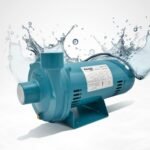Have you ever wondered how fuel tanks keep us safe when storing dangerous liquids? Fuel is essential for many purposes, but it can also be risky if not stored properly.
This article highlights the safety features of modern fuel tanks that protect people and the environment. Understanding these features can help you see why safety matters and how technology is making fuel storage safer every day. Keep on reading.
Double-Walled Construction
Double-walled fuel tanks consist of two layers of metal or other materials. The space between the two walls serves as a barrier that captures any leaks. This design helps prevent fuel from escaping into the environment.
The inner wall holds the fuel, while the outer wall protects against damage. If the inner wall breaks, the outer wall contains the fuel. This safety feature reduces the risk of contamination and spills.
Leak Detection Systems
Leak detection systems use sensors to find fuel leaks early. These sensors monitor both the tank and the space between the walls. When a leak is detected, the sensors promptly alert the operator.
Early detection helps prevent fuel from spreading outside the tank. Operators can act quickly to fix leaks before they cause harm. This system ensures that the area remains safe and clean.
Overfill Prevention Devices
Overfill prevention devices stop tanks from being filled beyond their capacity. They use sensors or mechanical parts to detect when the tank is nearly full. When triggered, they stop the flow of fuel.
These devices prevent fuel spills that may occur during filling. Spills can cause safety hazards and environmental damage. Utilizing these devices helps ensure safer fuel storage.
Corrosion-Resistant Materials
Fuel tanks use metals and coatings that resist corrosion. Corrosion weakens the tank and can cause leaks. The materials help the tank last longer and stay strong.
Standard steel tanks are prone to rust when exposed to fuel and moisture. Modern tanks utilize special coatings or stainless steel to prevent this. This contributes to long-term safety.
Emergency Venting Systems
Emergency vents allow pressure inside the tank to escape safely. Fuel tanks can build pressure from heat or chemical reactions. Without vents, the pressure could cause the tank to burst.
Vents automatically open when pressure reaches a predetermined level. This prevents accidents caused by too much pressure. The system works quietly but protects the tank and people nearby.
Spill Containment Areas
Spill containment areas are basins or walls around the fuel tank. They contain fuel if a leak or spill occurs. This prevents fuel from reaching the ground or water.
Containment areas are particularly significant for tanks of varying sizes. For example, a 500 gallon emergency fuel storage tank requires proper containment to manage any accidental spills safely.
The containment area holds the fuel safely until it can be cleaned up. This design significantly minimizes environmental harm. It also makes it easier to manage spills.
Automatic Shutoff Valves
Automatic shutoff valves close by themselves when a leak or problem happens. They stop the flow of fuel without needing a person to act. This helps limit the amount of fuel that escapes.
These valves operate quickly to prevent major accidents. They are integral to many modern fuel tanks, ensuring enhanced safety. The system increases control over the fuel storage.
Secondary Containment Systems
Secondary containment systems are extra barriers built around the main fuel tank. They catch leaks or spills that escape the primary tank. These systems help prevent fuel from reaching soil or water.
These containment systems can be made from concrete, steel, or synthetic materials. They need to contain the entire volume of the tank in the event of failure. This feature provides an essential layer of protection for fuel storage.
Fire Suppression Systems
Fire suppression systems detect and put out fires quickly. They employ sprinklers, foam, or gas to effectively control the flames surrounding the tank. This significantly lowers the risk of fire spreading and inflicting damage.
These systems activate automatically upon detection of heat or smoke. They help safeguard individuals and property located near the fuel tank. Fire suppression is essential in areas with flammable fuel.
Pressure Relief Valves
Pressure relief valves release excess pressure inside the tank safely. Pressure may build up due to temperature fluctuations or chemical reactions. The valves mitigate damage by opening when pressure exceeds safe limits.
These valves close automatically once the pressure returns to a safe level. They protect the tank from bursting or deforming. Pressure relief valves improve the overall safety of fuel storage.
Tank Level Monitoring
Tank level monitoring systems measure how much fuel is inside the tank. They provide real-time data to operators about fuel volume. This helps prevent overfilling and manages fuel use.
The system uses sensors or gauges to track levels continuously. Operators can plan refills and detect leaks faster. Accurate level monitoring is key for safe tank operation.
Remote Monitoring Technology
Remote monitoring lets operators check tank status from a distance. This encompasses leak detection, fuel levels, and pressure monitoring. The technology employs wireless signals to transmit data instantaneously.
Remote systems enhance safety by facilitating prompt responses to issues. They minimize the necessity for continual physical inspections. This practice ensures that tanks remain secure and well-maintained.
Vapor Recovery Systems
Vapor recovery systems capture fuel vapors released during filling or storage. These vapors can be harmful to the environment and health. The system collects and returns vapors to the tank or treats them safely.
By reducing vapor release, these systems limit air pollution. They further decrease fire risks by managing flammable gases. Vapor recovery plays a vital role in ensuring tank safety.
Secure Access Controls
Secure access controls restrict who can access the tank area. Only authorized personnel are permitted to work near or inside the tank. This reduces the risk of accidents caused by unauthorized actions.
Access controls can include locks, key cards, or biometric scanners. Maintaining security in the area helps safeguard both personnel and fuel. It also prevents theft or vandalism.
Safe Fuel Storage Smart Design Peace of Mind
Safety in fuel storage has become increasingly critical. With modern tanks designed to prevent leaks and spills, risks are significantly minimized. These innovations safeguard communities and the environment.
As fuel consumption continues to rise, safety features will continue to evolve. Being aware of these advances supports safer fuel handling in daily life.








